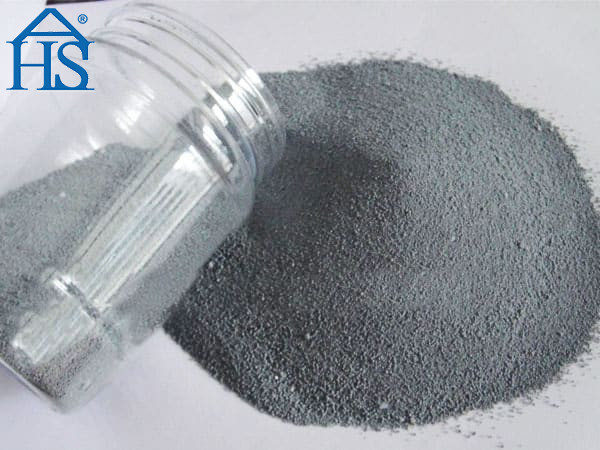Silica fume surface modification can change the original polarity of the mineral surface to non-polar, improve the affinity and compatibility of silica fume and organic polymers, as well as mobility, dispersion, can improve the mechanical properties of organic composites, can be more widely used in the field of plastics, rubber, adhesives, paints, coatings, electrical insulation encapsulation materials and so on. So, do you know what are the effects of surface modification of specific silica fume?
The silica fume modification method
Add a certain amount of silica fume to three flasks, preheat, add 1:1 ammonia, adjust the pH 8.5 or so, control the temperature at 120 ℃ preheating 2h to remove water, 90 ℃ to add silica micropowder with different mass fractions of silane coupling agent YDH-550 surface modification, high-speed stirring for 90min, 120 ℃ drying.
Characterization of the modification effect of silica fume
- The determination of oil absorption rate: accurately weigh 5.0g sample on the surface dish, add dibutyl phthalate drops with a dropper, and mix well with a knife, when bonded into a mass just coated with adhesion to the surface of the dish without cracks and fragments, weighing, calculating the amount of dibutyl phthalate at this time, converted to 100g of ultrafine silica micropowder oil absorption value.
- The determination of activation index: accurately weigh the sample 4.0g, placed in a 100ml graduated cylinder with a lid, add the appropriate amount of distilled water, oscillation, standing, to be stable system, remove the floating part of the water surface, drying, accurate weighing, calculation of activation index. Activation index H = floating mass (g) / sample mass (g).
- The determination of penetration time: take a certain sample into a flat small container, with a flat glass to the surface of the hard compaction, so that the surface is smooth, with a dropper drop of water or organic test solution, record the time completely absorbed by the sample and the drop added when the contact angle with the surface of the sample.
- Viscosity determination and infrared spectroscopy, transmission electron microscopy characterization: selected modified products, respectively, before and after the determination of sample modification in liquid paraffin, dibutyl phthalate and other media viscosity; respectively, before and after the sample modification of infrared spectroscopy and transmission electron microscopy test.
The effect of surface modification of silica fume
The effect of oil absorption rate
Modified silica fume oil absorption value compared to unmodified have different degrees of decline, indicating that the coupling agent changes the surface properties of silica fume.
Effect on activation index
Before the modification of silica fume, the surface of the specimen is polar state hydrophilic, and has a large relative density, easy to settle naturally, the activation index is low; after the modification of the surface of the specimen is nonpolar, hydrophobicity is enhanced, the activation index increases. After the modifier dosage is greater than 1.5%, the increase of activation index tends to slow down.
Influence on penetration time
The penetration time of silica fume can characterize the compatibility of the modified specimen with water or organic solvents, and the long penetration time with water indicates that the hydrophobicity is good and the hydrophilicity is poor, and the long penetration time with organic solvents indicates that the hydrophobicity is poor and the hydrophilicity is good. The permeation time of the specimens in liquid paraffin and dibutyl phthalate was reduced after silica fume modification, and the permeation time gradually decreased with the increase of modifier dosage. Comprehensive oil absorption rate, activation index, penetration time and other indicators, and take into account the economic cost and other factors, selected modifier dosage of 1.5% is ideal.
The impact of dispersion
The dispersibility of particles in organic materials has a correlation with the viscosity of its organic solvents, silica fume modified specimens in liquid paraffin and dibutyl phthalate in the viscosity are greatly reduced.





